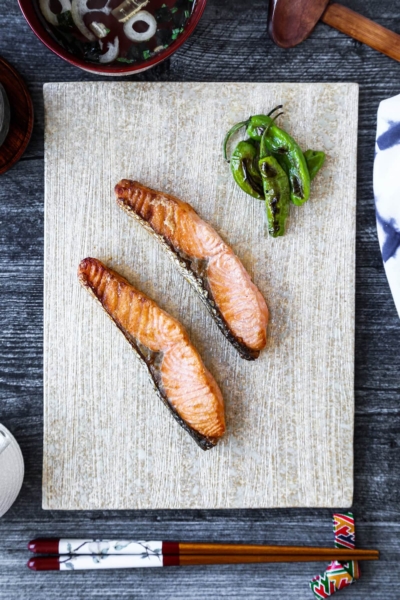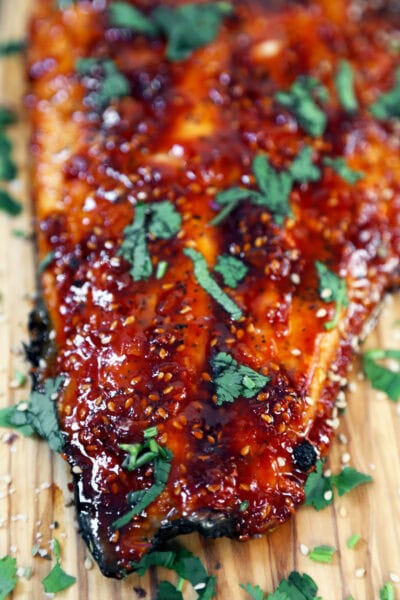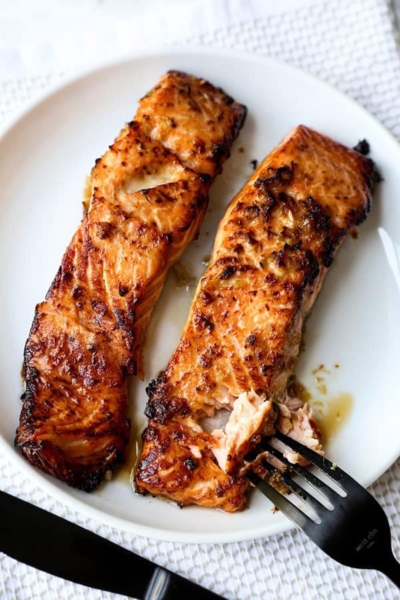I whip up my tender, flaky Japanese miso salmon recipe with just 5 ingredients. It’s so succulent it practically melts in my mouth. And my marinade is a simple combination of ingredients used in a ton of popular Japanese recipes. Strap in – this is a good one!
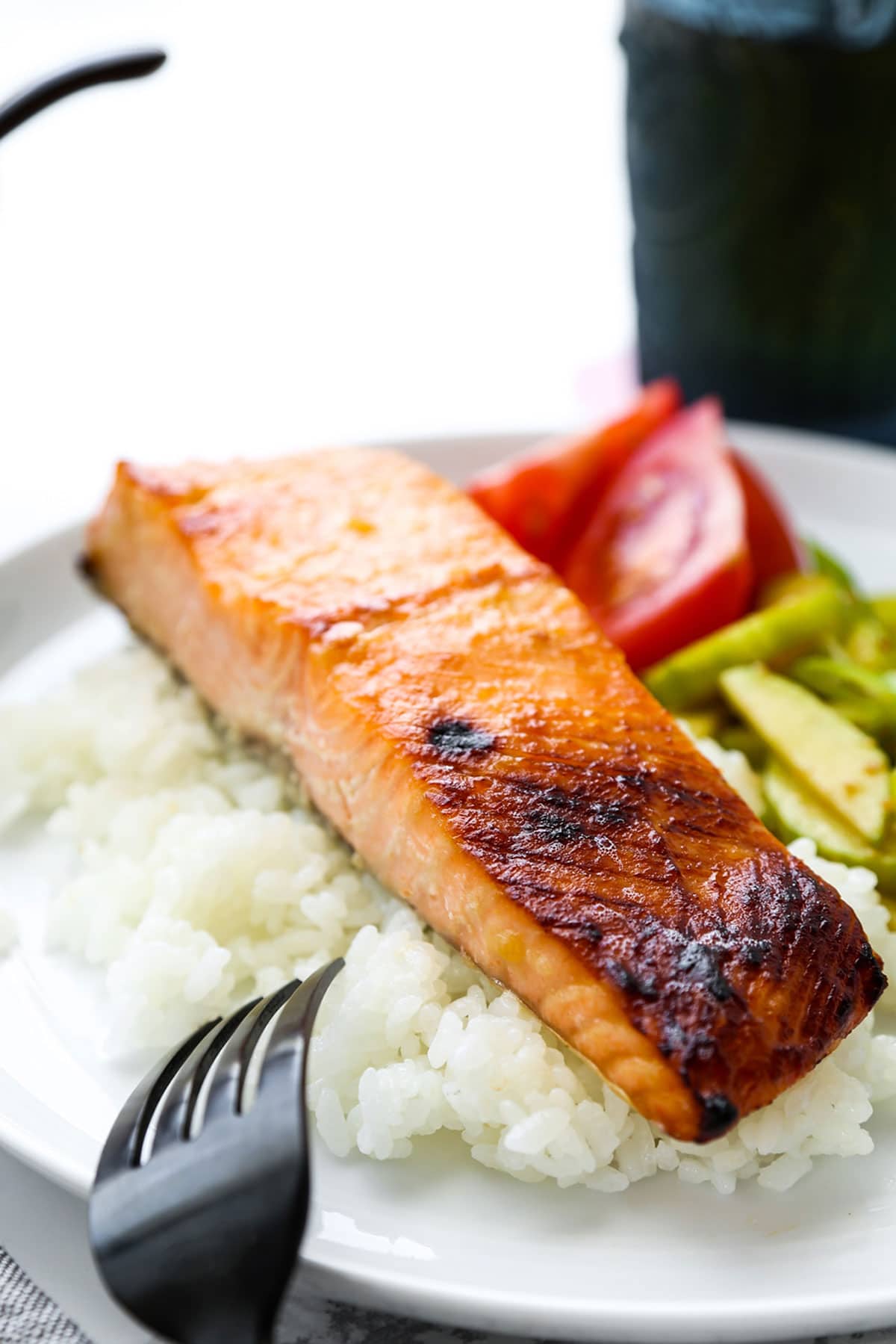
I was running out of time. My mother-in-law was headed over for dinner in a couple hours and had requested her favorite: Japanese salmon. I had been planning to make shiozake (Japanese salted salmon), but my day got away from me and I no longer had 12-hours plus for a salt brine. So I turned to my favorite tool for making fast acting umami Japanese marinades: miso paste. Adding sake and mirin to the mixture allowed me to create the perfect trinity of salty, sharp and sweet for my marinade.
I got to work, with my eye on the clock. Now, if I’m being honest, I was a little concerned that – since this was so easy to make – it might somehow fall short. But, the moment we all took our first bites, the sophisticated and punchy flavors eradicated those worries. Not only was my salmon bursting with flavor, but the flesh was more tender and juicy than I ever could have hoped for. Now, when my mother in law puts in a dinner request, 9 times out of 10, she asks for miso salmon!
Table of Contents
Why This Recipe Works
- Miso paste tenderizes the salmon and infuses the fish with umami.
- A splash of mirin neutralizes any fishy smell.
- Only 5 ingredients. 5 minutes of prep time. Tons of flavor from a short soak in my simple Japanese marinade.
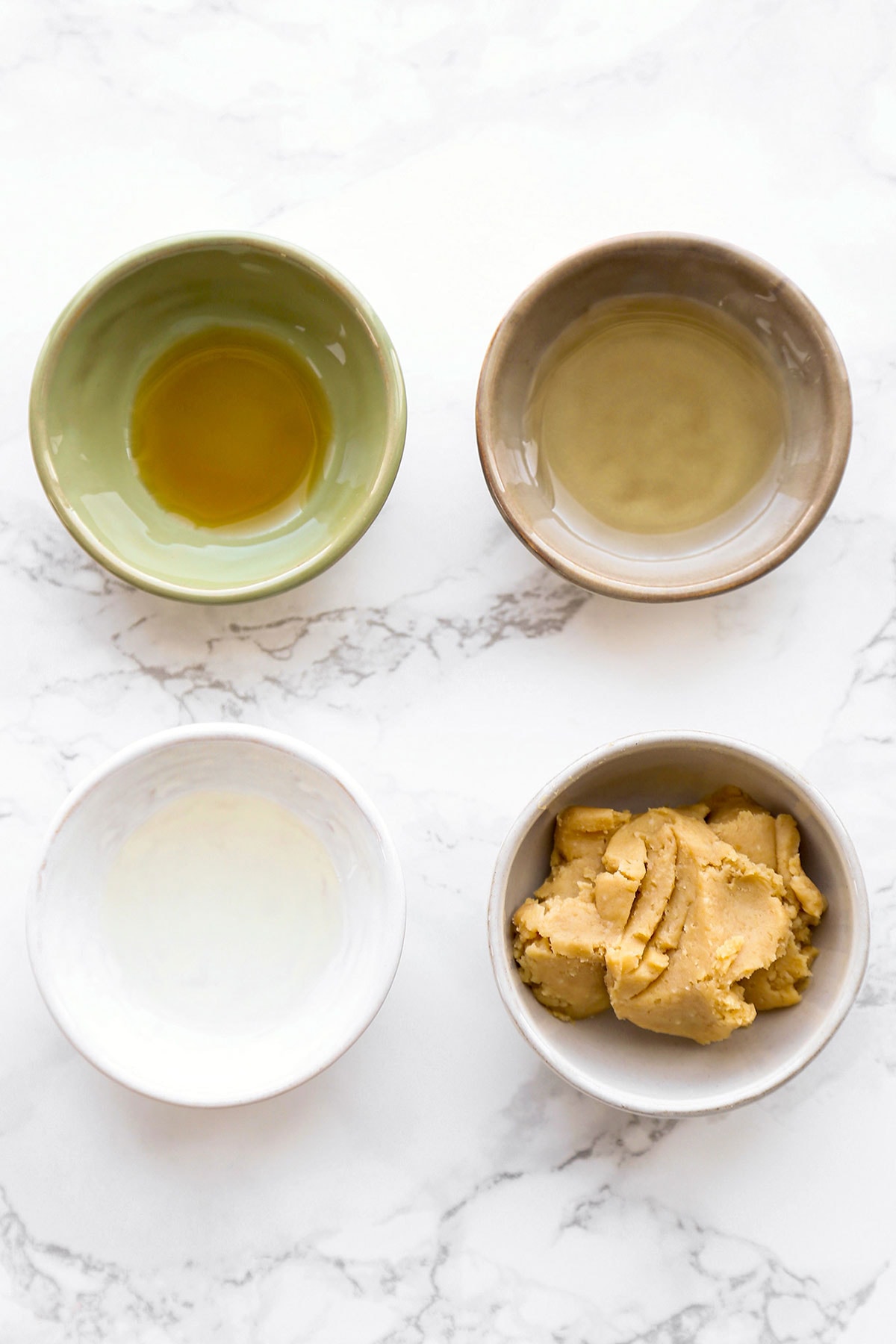
Ingredients
- Salmon: 4 ounce fillets are a good average size – but I sometimes use smaller or larger cuts. This is how I track down sustainable salmon. Feel free to use fresh or frozen salmon fillets.
- Miso Paste: White miso works best in this recipe. It’s not as salty as red miso paste. 3 tablespoons will do. Miso paste pulls double duty here: I use it to infuse a ton of umami flavor, and to tenderize the fish at the same time.
- Sake: Just one tablespoon. You can either use a sake you intend to drink on its own, or use cooking sake.
- Mirin: I use 2 tablespoons of mirin to add a little bright sweetness – and to neutralize any fishy odor.
- Sesame Oil: Normally I use just half a teaspoon of sesame oil for a touch of toasted nuttiness.
Ingredient Substitution
What can I use instead of miso paste?
While there aren’t any perfect substitutes for miso paste, there is one common kitchen ingredient that works really well in a pinch. Soy sauce.
Soy sauce has plenty of umami and also acts as a meat tenderizer – both qualities that can be found in miso paste. The flavors won’t be exactly the same, but it’s a common pantry staple I’ve used to approximate this recipe and still enjoy a delicious piece of salmon for dinner. My marinating time recommendations are the same with soy sauce as with miso paste.
Honorable mention: Korean doenjang also makes a great stand in for miso paste.
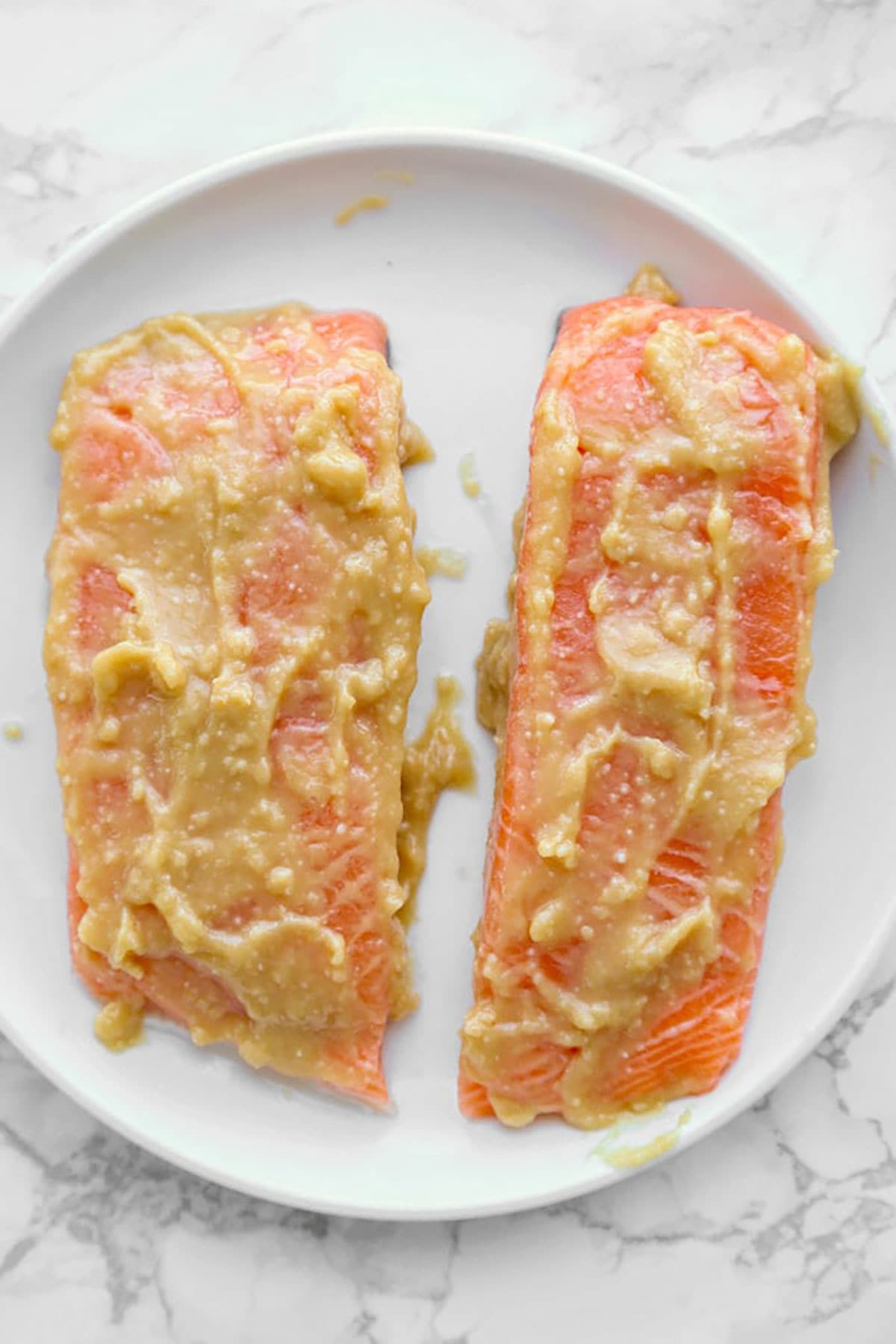
How to Make Miso Salmon
- Make the marinade. Combine the miso paste, sake, mirin, and sesame oil. Miso paste is quite thick and can be hard to mix with a spoon. I use a whisk to thoroughly blend the ingredients.
- Marinate the salmon. Brush the salmon fillets with the miso marinade. Coat the top, bottom and sides. Refrigerate for 30 to 60 minutes.
- Prep the tray and fillets. Cover a cooking tray with parchment paper or non stick foil and place the salmon fillets on top (skin side down). Wipe off some of the miso marinade (any large concentrations you see on the fish).
- Broil the salmon. Place the cooking tray on the second highest rack – you don’t want the fish to be too close to the flame – and broil for 8-10 minutes. Keep an eye on the salmon the entire time in case the miso marinade starts to burn. When the salmon flakes easily, it’s done.
- Serve immediately.
Expert Tip
How long should I marinate the salmon filets? How long is too long?
For this particular recipe I recommend marinating the fish for about 45 minutes to get the perfect balance of flavor.
When it comes to miso marinated salmon, it’s best not to over marinate as the fillets may come out too salty. Up to an hour is fine, even 90 minutes if you like it super flavorful. But I try not to go over that as it might alter the delicate texture of the fish – and infuse too much umami and salt.
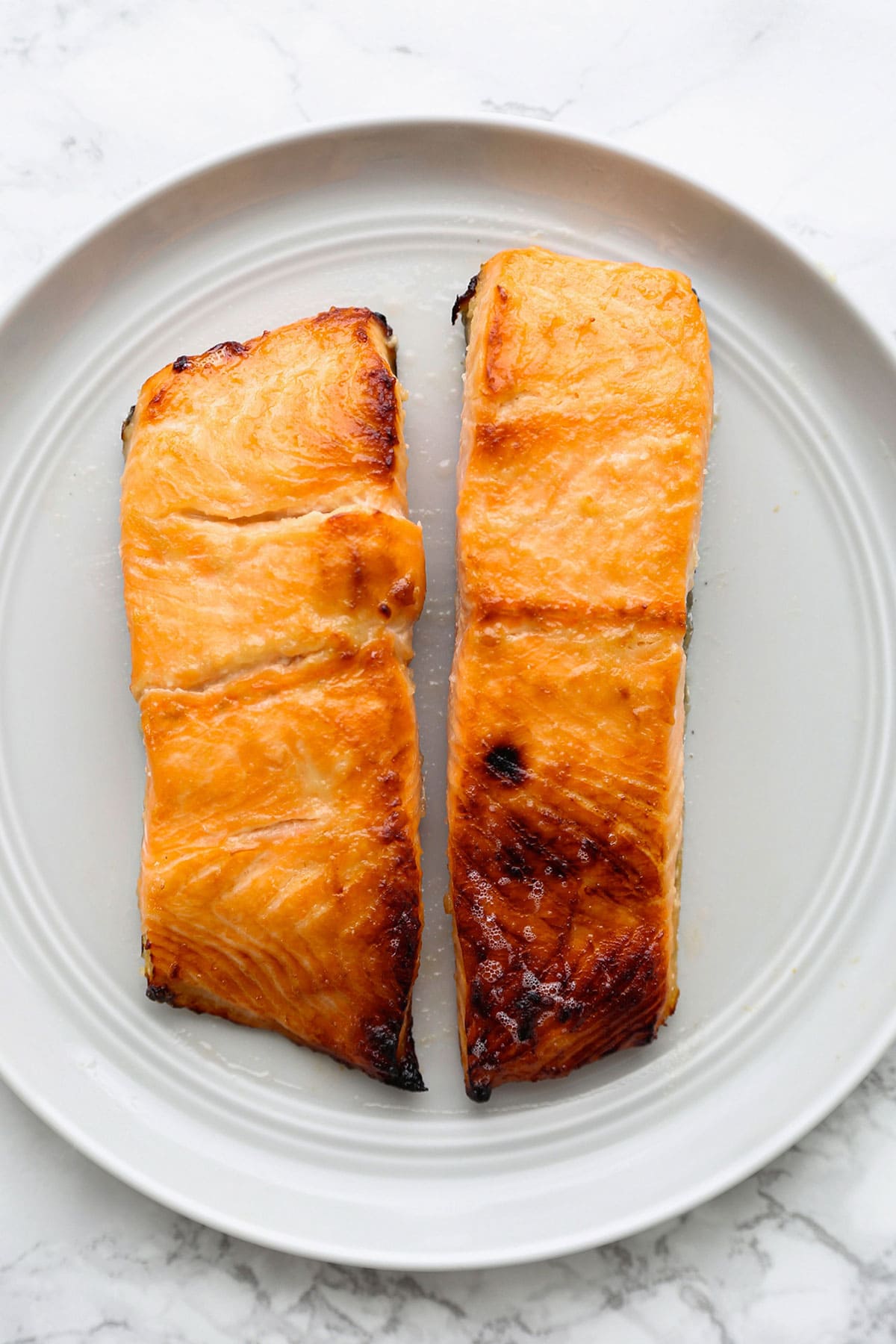
Ideal Internal Temperature
- The USDA recommends cooking salmon to an internal temperature of 145°F.
- Most restaurants cook salmon to an internal temp closer to 125°F.
That’s a fairly substantial difference! The trade off for guaranteed food safety often comes at the expense of enjoyment. Salmon cooked to that recommended 145°F temperature can oftentimes be chalky, chewy, dry – and just seem generally overcooked.
At the end of the day, it’s your choice. 145°F is the official guideline. If you decide to pull it out of the oven closer to 125°F, keep in mind that it’s important you’re using responsibly sourced fish that has been handled and stored safely. A meat thermometer can come in handy when testing internal temperature.
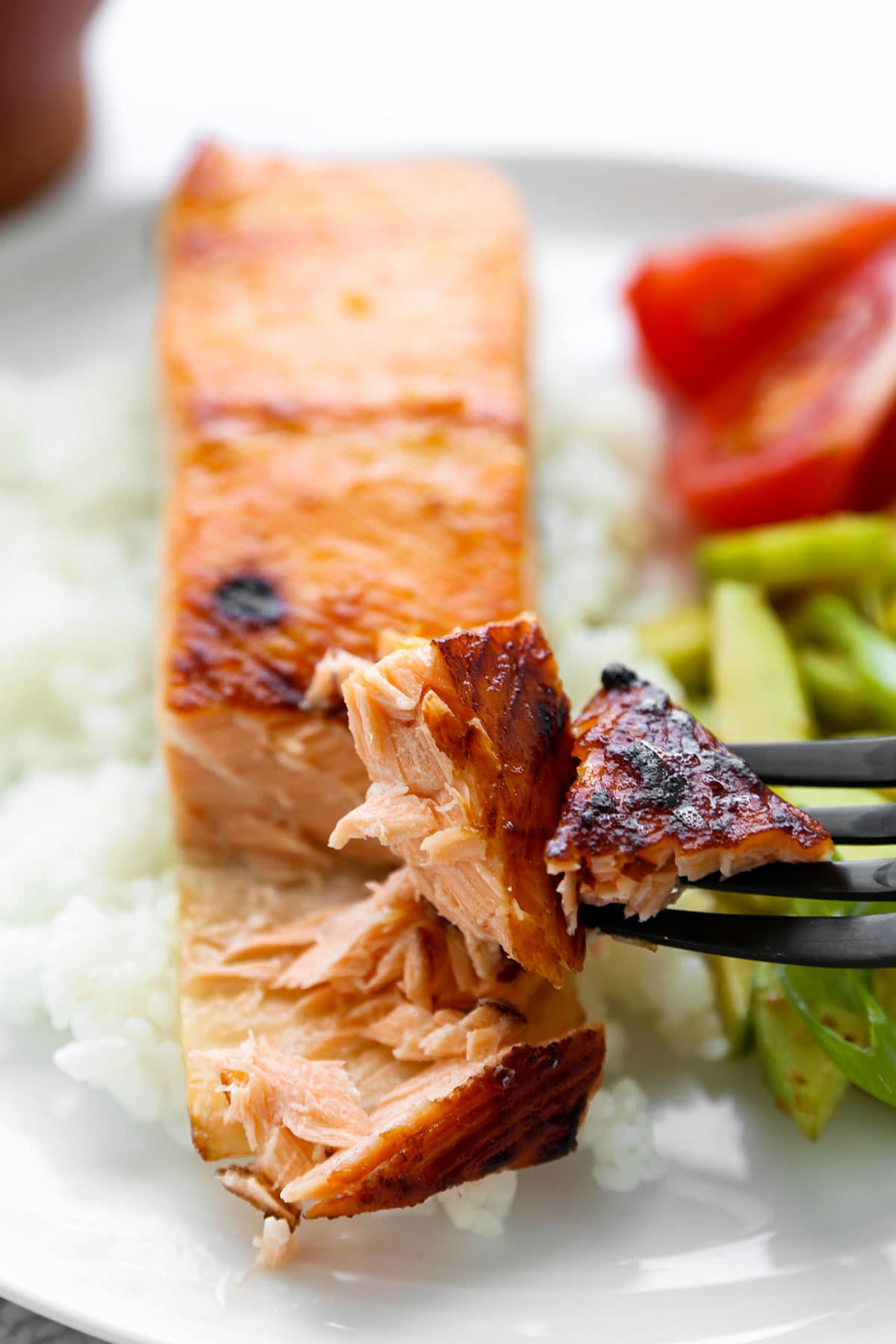
Storage and Reheating
Store leftover salmon covered in the refrigerator for up to 2 days.
- Gently reheat in the microwave at 50% intensity until warmed through.
- Or flake the leftover salmon and serve in Japanese ochazuke (green tea or dashi over rice with toppings) – or even salmon onigiri (Japanese rice balls).
What to Serve With Miso Salmon
Japanese dinners typically consist of several small dishes and a bowl of short grain Japanese rice on the side. Here are a few plug and play combinations I whip uo to make my miso salmon recipe a full meal:
- Goma-ae (Japanese Spinach Salad With Sesame Sauce)
- Blistered Shishito Peppers
- Hijiki Salad (Hijiki No Nimono)
- My Mom’s Miso Soup
- Salad With Japanese Restaurant Style Carrot Ginger Dressing
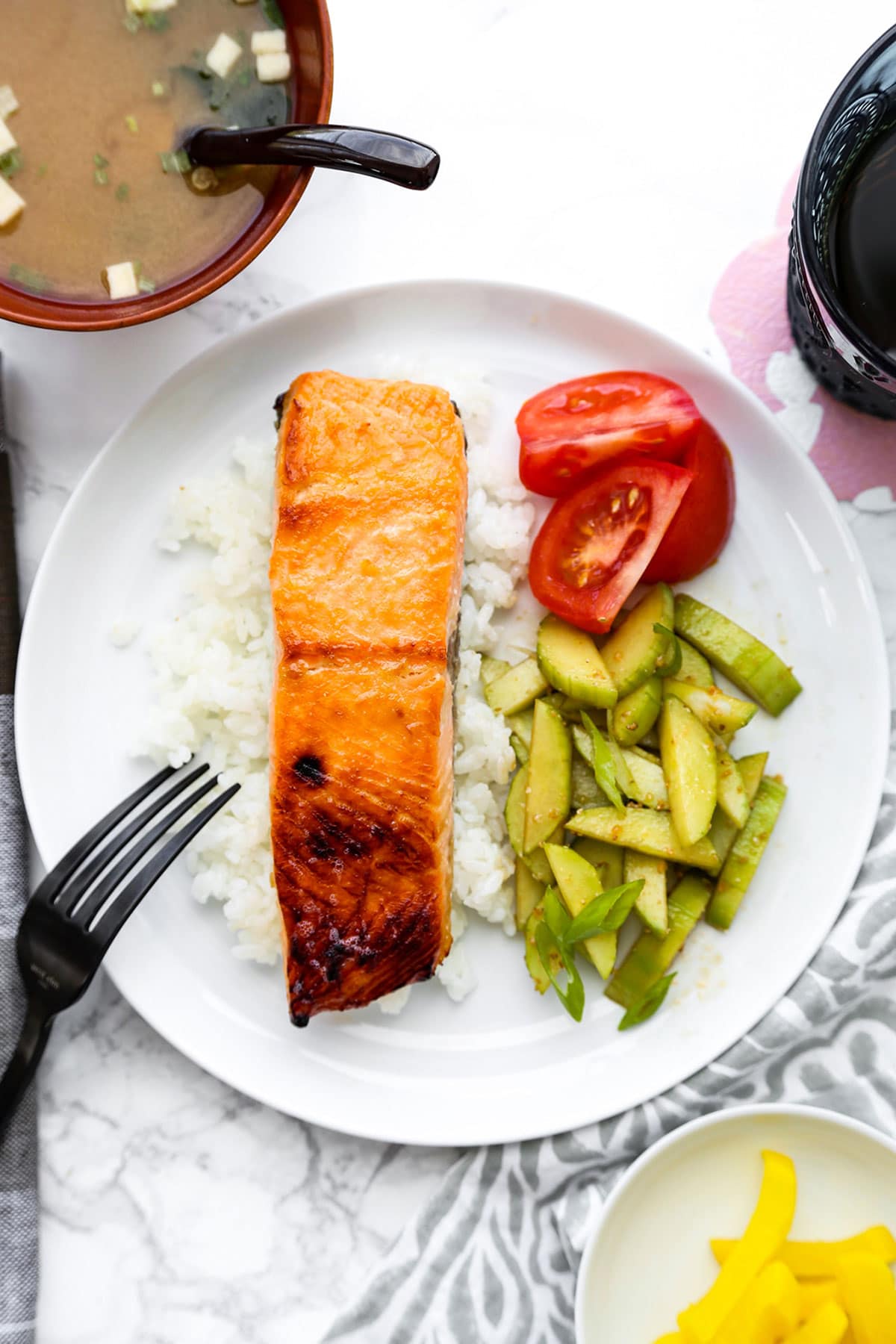
Frequently Asked Questions
Miso paste burns quickly. To be clear though, just wipe off the big lumps of miso with a paper towel or lightly scrape with a butter knife. There’s no need to eliminate every trace of the miso paste before broiling – just the large concentrations.
Yes! This miso salmon recipe is gluten free as written. That said, it’s best to read the label on your miso paste to make sure there wasn’t any sneaky wheat added during production – or potential cross contamination. This miso paste is gluten free. Also have a peek at the sake label. Most premium sake is GF, but both basic drinking and cooking sake sometimes have wheat added during production.
Trust me, I get this. My husband was not big on salmon either. He had spent most of his life eating boring pan fried salmon with lemon wedges on the side (usually a sign that the fish didn’t get much love in the kitchen). Plus, the notion that salmon could be melt-in-your-mouth tender was completely foreign to him. The best salmon is usually served just short of well done so that the fat glistens and the meat retains all of its moisture. And the miso paste actually transforms the texture of the fish – helping with tenderness. He loves this recipe btw.
More salmon recipes to try
Honey sriracha salmon, Asian salmon salad, Ginger garlic air fryer salmon, Salmon teriyaki donburi, Salmon tikka over quinoa, Salmon croquettes, Korean salmon bowl, tomato and smoked salmon salad
Did you enjoy this recipe? Are there changes you made that you would like to share? Share your tips and recommendations in the comments section below!
Print
Miso Salmon
- Prep Time: 5 minutes
- Cook Time: 10 minutes
- Total Time: 45 minutes
- Yield: 2 fillets 1x
- Category: Fish
- Method: Broiling
- Cuisine: Japanese
- Diet: Gluten Free
Description
My simple mixture of miso paste, sake and mirin tenderizes the meat to a point where it almost melts in your mouth. It’s unbelievably effective!
Ingredients
- Two 4–6 oz salmon fillets
For the marinade:
- 3 tablespoons miso paste
- 1 tablespoon sake
- 2 tablespoons mirin
- 1/2 teaspoon toasted sesame oil
Instructions
- Make the marinade. Put all the ingredients for the marinade in a bowl and mix well, until the miso paste has dissolved.
- Marinate the salmon. Add salmon fillets to the bowl, and coat well on both sides. Turn the fillets so the skin side is up and refrigerate for 30 to 60 minutes, maximum. If you leave the salmon for longer than that, the texture might get a little mushy and the flavor, too salty.
- Prepare the tray and the fillets. Cover a cooking tray with parchment paper and place the salmon fillets, skin side down (wipe off some of the marinade from the fillets – mainly the lumps – before placing them down to prevent the miso sauce from burning).
- Broil the salmon. Turn on the broiler and move the grill to the second highest rack, about 6 inches away or more from the flame. The reason you don’t want to place the tray any closer is because miso and mirin burn easily. Place the cooking tray on the rack and broil for 8-10 minutes, until salmon is cooked through. Keep an eye on the salmon to make sure the marinade isn’t burning. If you notice the marinade getting darker too quickly, move the salmon to a lower rack.
- Serve with rice and vegetables.
Notes
Miso salmon tastes best right out of the oven. But you can store any leftovers, covered in the refrigerator, for up to 2 days.
Nutrition
- Serving Size: 1 salmon fillet
- Calories: 302
- Sugar: 6.5g
- Sodium: 201.1mg
- Fat: 9.3g
- Saturated Fat: 1.3g
- Unsaturated Fat: 2.1g
- Trans Fat: 0g
- Carbohydrates: 14.5g
- Fiber: 1.4g
- Protein: 34.7g
- Cholesterol: 72.4mg
